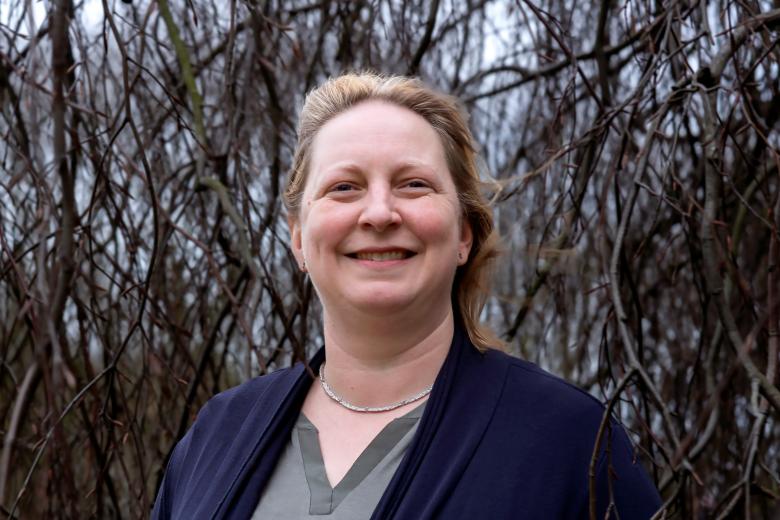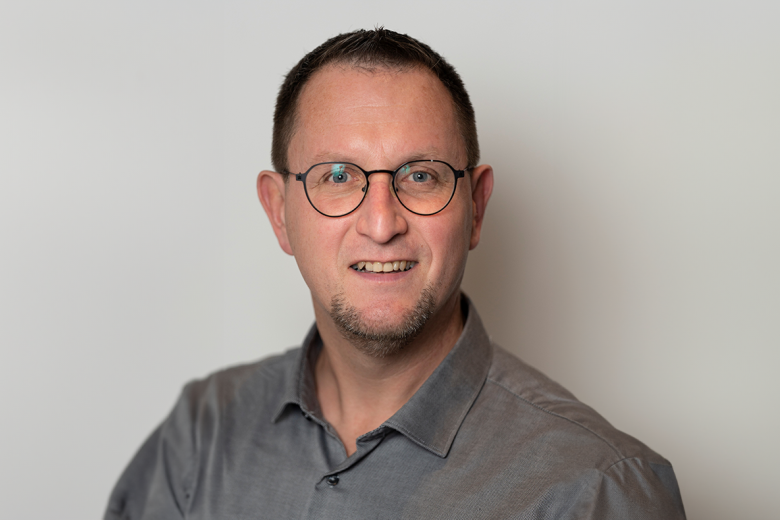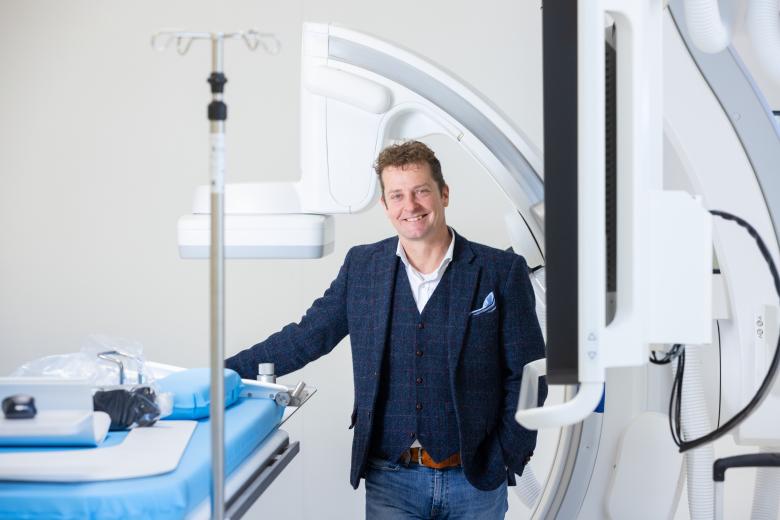Alessandro Bertolini, the scientist who studies and loves quietness
Alessandro Bertolini, an experimental physicist, will be appointed endowed professor of Gravitational Wave Detection Technologies at Maastricht University on September 1. Bertolini is a world-renowned expert in vibration isolation research. His task will be to keep the mirrors of the Einstein Telescope as quiet as possible. He and his colleagues will strive to take this to unprecedented levels to enable the immense discovery potential of the new observatory.
He admits that, coming from the ancient Tuscan town of Volterra, he likes Maastricht better than Amsterdam. "I don’t like overcrowded cities; hence, I enjoy visiting Maastricht with my family. It is peaceful enough for me." Bertolini presently works at the Nationaal Instituut voor Subatomaire Fysica (NIKHEF) in Amsterdam, where he runs his research in experimental physics. He also travels to Maastricht on a regular basis for work because he is involved in the Einstein Telescope initiative and is one of the initiators of the prototype ET-Pathfinder. As a result, it feels only natural that he now holds an endowed chair at the Faculty of Science and Engineering's Gravitational Waves and Fundamental Physics department.
Quiet mirrors
In Amsterdam, Bertolini led the team of engineers and physicists who designed and are now preparing the suspension system for the ET-Pathfinder mirrors. In Maastricht, the team will integrate it into ET-Pathfinder and test the featured novel technical solutions in real operational conditions. The suspension system minimises the mirror’s movement due to external vibrations. This is a critical task because the mirror must detect almost immeasurably small movements caused by gravitational waves. The slightest vibration of the mirror will throw off these measurements.
Unfortunately, the less you want the mirror to vibrate, the larger the suspension system becomes. The present design of the Einstein Telescope features 17-metre-tall steel towers that house the mirrors and suspension system. These towers must fit into the underground observatory, which necessitates the excavation of vast and expensive caverns. Bertolini and his colleagues will develop an innovative suspension system that can fit inside towers and caverns that are only half as tall. If this design proves successful, it will favourably impact the cost of building the Einstein Telescope.
The endowed chair in Gravitational Wave Detection Technologies is supported by both Maastricht University and Nikhef, the Dutch National Institute for Sub-atomic Physics.
Universe
Eventually, scientists will use the Einstein Telescope to peer into the universe. When completed, the observatory will be one of several capable of detecting gravitational waves. One of these could even be constructed on the moon. Bertolini began his career as a PhD student in Pisa, designing a novel seismometer that could be used in the Lunar Gravitational-Wave Antenna. "The plan is to place ultrasensitive seismometers on the Moon's surface and listen for the ringing of the Moon when a gravitational wave passes through it." Bertolini emphasises that he is only marginally involved in the lunar project and is not actively working on it. Nonetheless, it is exciting to see one's work, which began many years ago, potentially appear on the moon as well as deep underground in the Euregio Meuse-Rhine.
Biography
Alessandro Bertolini studied physics and earned his PhD in Pisa, where he began his work on the instruments within a gravitational wave detector. Following that, he relocated to DESY (Deutsches Elektronen-Synchrotron) in Hamburg, where he worked on the feasibility assessment of the International Linear Collider. "In Hamburg, I learned many new things that were outside of my field at the time."
At the Albert Einstein Institute in Hannover, a R&D centre specialising in gravitational wave detectors, he realised advanced vibration isolators for suspended optics. Around 12 years ago, physics professor Jo van den Brand encouraged Bertolini to perform similar research at Amsterdam's Nationaal Instituut voor Subatomaire Fysica (NIKHEF) and to join the VIRGO Collaboration. He has been involved in the developments surrounding the Einstein Telescope from the beginning. Together with van den Brand, he drafted the first concept of the ET-Pathfinder, the Einstein Telescope prototype. "ET-Pathfinder grew much larger than we ever imagined", he says.
Bertolini is in the technical management of VIRGO, the European gravitational wave detector, and is in charge of seismic attenuation in the ET-Pathfinder project. He co-chairs the Suspension division of the Einstein Telescope Instrument Science Board and coordinates the mechanics of the Einstein Telescope EMR Site & Technology (E-TEST) prototype experiment. Currently, Bertolini is also involved in the Dutch Black Hole Consortium (DBHC).
Also read
-
Working at UM: “a life-changing experience”
"I am proud that our new Circular Plastics group published its first completely in-house research," Kim Ragaert says. She founded the research group three years ago, when she moved to Maastricht. Her work has laid the foundations for many innovations in the field of plastic recycling, and she is...

-
How does the universe taste?
Gerco Onderwater investigates the flavour of the universe while guarding the flavour of the Maastricht Science Programme. On 31 May, during his inaugural lecture, he provided a pre-taste of his work in Maastricht.

-
Bridging the gap between technology and clinical practice
Lee Bouwman, a vascular surgeon and endowed professor of Clinical Engineering, specialises in the implementation of groundbreaking healthcare technologies. The key to success, he says, lies in the collaboration between engineers and clinicians. This approach has already resulted in a range of...
